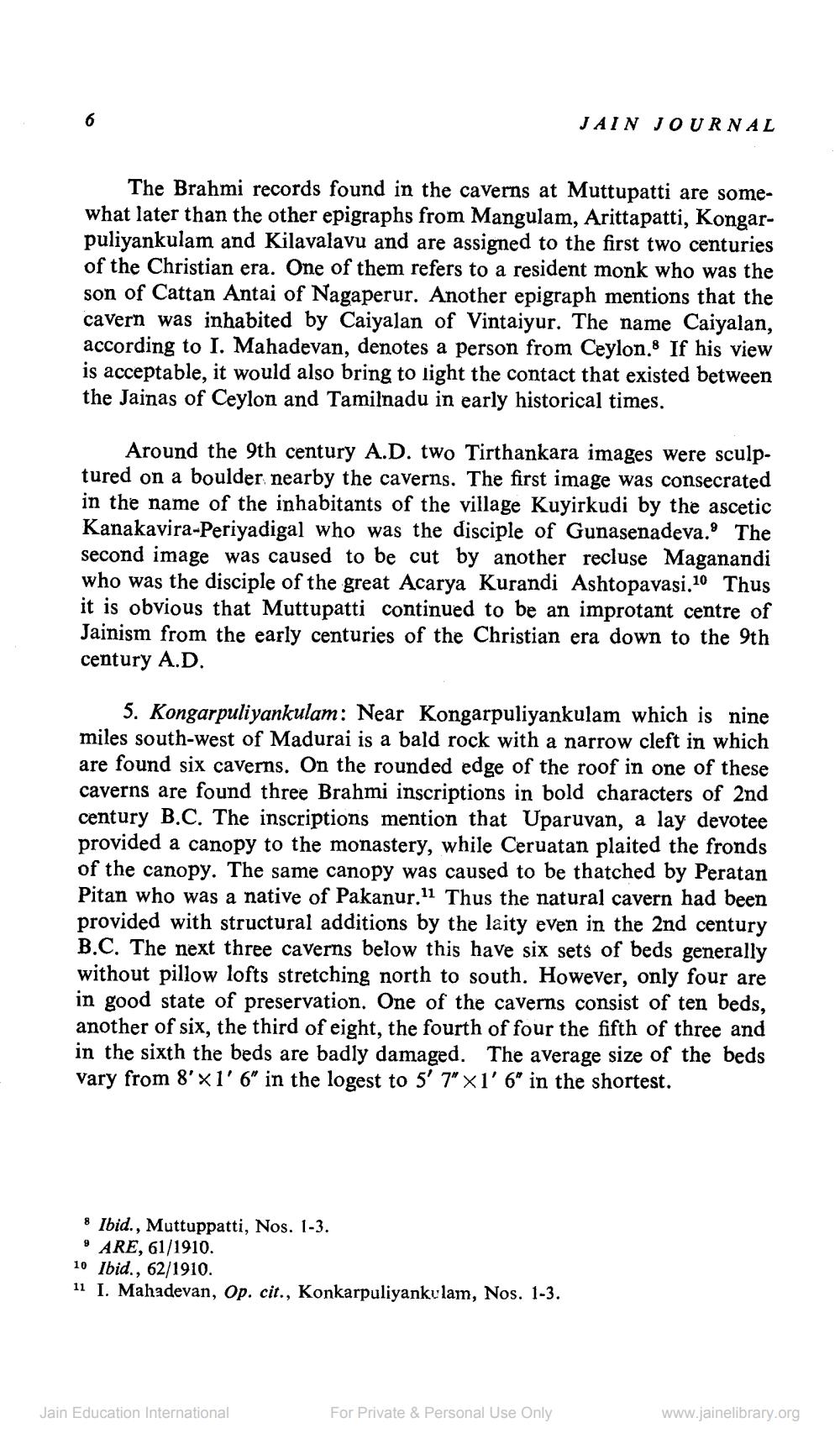Book Title: Jain Journal 1989 07 Author(s): Jain Bhawan Publication Publisher: Jain Bhawan Publication View full book textPage 7
________________ JAIN JOURNAL The Brahmi records found in the caverns at Muttupatti are somewhat later than the other epigraphs from Mangulam, Arittapatti, Kongarpuliyankulam and Kilavalavu and are assigned to the first two centuries of the Christian era. One of them refers to a resident monk who was the son of Cattan Antai of Nagaperur. Another epigraph mentions that the cavern was inhabited by Caiyalan of Vintaiyur. The name Caiyalan, according to I. Mahadevan, denotes a person from Ceylon. If his view is acceptable, it would also bring to light the contact that existed between the Jainas of Ceylon and Tamilnadu in early historical times. Around the 9th century A.D. two Tirthankara images were sculptured on a boulder nearby the caverns. The first image was consecrated in the name of the inhabitants of the village Kuyirkudi by the ascetic Kanakavira-Periyadigal who was the disciple of Gunasenadeva. The second image was caused to be cut by another recluse Maganandi who was the disciple of the great Acarya Kurandi Ashtopavasi.10 Thus it is obvious that Muttupatti continued to be an improtant centre of Jainism from the early centuries of the Christian era down to the 9th century A.D. 5. Kongarpuliyankulam: Near Kongarpuliyankulam which is nine miles south-west of Madurai is a bald rock with a narrow cleft in which are found six caverns. On the rounded edge of the roof in one of these caverns are found three Brahmi inscriptions in bold characters of 2nd century B.C. The inscriptions mention that Uparuvan, a lay devotee provided a canopy to the monastery, while Ceruatan plaited the fronds of the canopy. The same canopy was caused to be thatched by Peratan Pitan who was a native of Pakanur. 11 Thus the natural cavern had been provided with structural additions by the laity even in the 2nd century B.C. The next three caverns below this have six sets of beds generally without pillow lofts stretching north to south. However, only four are in good state of preservation. One of the caverns consist of ten beds, another of six, the third of eight, the fourth of four the fifth of three and in the sixth the beds are badly damaged. The average size of the beds vary from 8' x1' 6" in the logest to 5' 7" X 1' 6" in the shortest. 8 Ibid., Muttuppatti, Nos. 1-3. . ARE, 61/1910. 10 Ibid., 62/1910. 11 I. Mahadevan, Op. cit., Konkarpuliyankulam, Nos. 1-3. Jain Education International For Private & Personal Use Only www.jainelibrary.orgPage Navigation
1 ... 5 6 7 8 9 10 11 12 13 14 15 16 17 18 19 20 21 22 23 24 25 26 27 28 29 30 31 32 33 34 35 36 37 38 39 40
